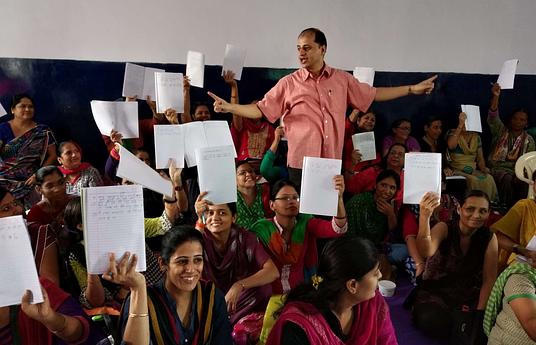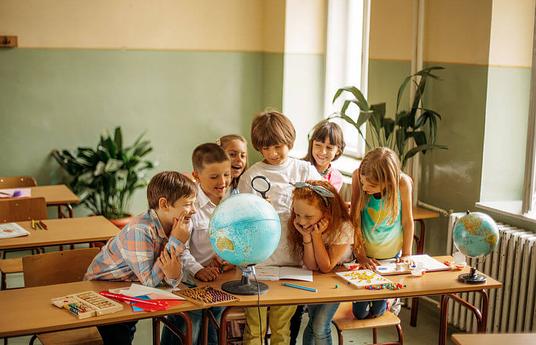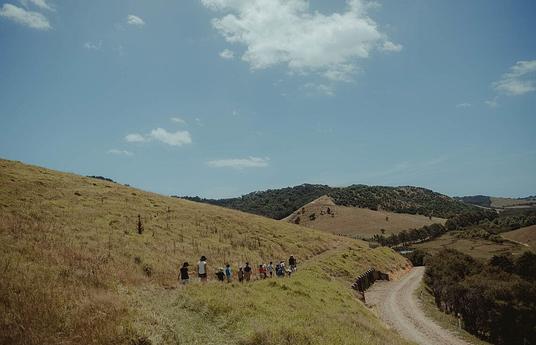In order to make holistic educational experiences for children, ones that nurture their whole being, we first need to make sure our teachers are receiving a holistic education too. SMILES in Education is an innovative teacher training program that prioritises teachers' wellbeing through practices like mindfulness, collaborative learning and incorporating wellbeing into classroom management.
We chat to SMILES creator, Vishal Sharma, to learn more.
What is SMILES in Education?
S.M.I.L.E.S. is a "Stress-free, Motivating, Inquisitive Learning Eco System" which ensures whole child development by integrating “Mindfulness” with Pedagogy for reducing distractions and increasing learning outcomes of cognitive skills; integrating “Well-Being” into Classroom Management for enhancing non-cognitive skills like self-control, mutual respect and compassion; and igniting “Passion” for learning and teaching to develop joyful and creative classrooms.
The SMILES program starts with a holistic approach to teacher training, through a stress-free and collaborative learning process and the integration of mindfulness & wellbeing with pedagogy. The ultimate goal is to have teachers who support whole child development through creating joyful and productive classrooms where cognitive excellence, inclusive learning, as well as physical, mental, emotional and social well-being are prioritised.
Why did you create SMILES in Education?
SMILES in Education was created to bring joy to the hearts of both teachers and students by making our classrooms and schools centers of holistic whole child development.
Usually there is lot of focus on quality of education, academic improvements and student well-being but hardly any effort is put to ensure that the teacher’s voice, their needs and their workloads are also taken into account. As a result, many teachers aren’t motivated to implement any new ideas or skills as it increases the pressure on themselves.
We wanted to change this since we believe the teacher is the most powerful & impactful part of the whole education ecosystem. Therefore in SMILES we are enabling a learning ecosystem which is stress-free and self-motivating, driven by the passion & needs of the teachers and the students.
Can you explain how it works in practice?
Teachers trained with SMILES in Education plan every class using three main components:
1. Mindful Beginning: Here the teacher seeks any 3 values from the students that they want to be mindful about throughout the lesson. Using ‘Mindful Breathing’, these values are absorbed by all the students. The teacher then introduces ‘what’ we are going to learn today and how it is related to what we learnt before. They also talk about ‘why’ this knowledge helps us in daily life.
2. Mindful Learning: Most of the session is spent learning the topic through engaging pedagogical practices like inquiry based discovery, with well-being techniques seamlessly integrated using SMILES Rules of learning for increased efficiency and classroom control.
3. Mindful Closing: Towards the end, a mindful reflection of what, why and how of what we learnt today is done by all students and the teacher together. It’s the most powerful part of the lesson where mindfulness helps students to recall, comprehend & memorize new knowledge gained. Mindful Gratitude is also part of this closing to build positive relationships between the teacher, their fellow students and themselves.
Why do you think it’s important for classrooms to prioritise wellbeing alongside academics?
For quality learning to happen, teacher and students’ well-being has to be given equal importance.. A person who is in a healthy and happy state of mind and body can be more creative, participate more and be more supportive of others. A healthy body, creative mind and happy heart are the foundation of the 21st century skills like Inventive thinking, creativity, adaptability, collaboration and interpersonal skills as outlined in the Engauge report of 2003.
Why is it particularly important for today’s world that we innovate teacher training?
As the world around us is constantly evolving, we need to catch up with that very fast. Education is one medium of doing that, so a teacher has to constantly and creatively update their teaching materials, teaching styles and skills to meet today’s requirements and prepare the students for the future challenges.
However, our teachers are always busy and may not get time to think about new ideas and innovations. So we need new and innovative ways of training our teachers to help them discover creative ways to deliver new age education using 21st century skills to our 21st century students.
What are the benefits you’ve seen due to SMILES in Education?
Impact data from our “SMILES in Education” program running from June 2018 in 3 schools in India found that 100% of teachers feel happier and healthier after using SMILES rules in classroom, 90% find SMILES Rules easy to implement in classroom, 80% teachers say their classroom has become more joyful, 79% teachers say their students became more attentive and more calm, and 67% teachers say their students show more interest in participating in classroom.
What advice would you give to people who’d like to do something similar where they are?
Mindfulness and wellbeing structures must be essential components for any learning we impart in schools for all ages, anywhere in the world to ensure whole child development.
If you already practice these techniques, take them to your classes and see if you can easily integrate them within your lesson plans. You will be amazed at the improvement in learning outcome, student behavior and energy level in your classroom.
If you are new to mindfulness, you can use information from our website and our videos to integrate whatever you are comfortable with. You may contact us for any help or suggestions. We can provide you with basic training of SMILES Rules and structures through webinar or workshops depending upon your location.



